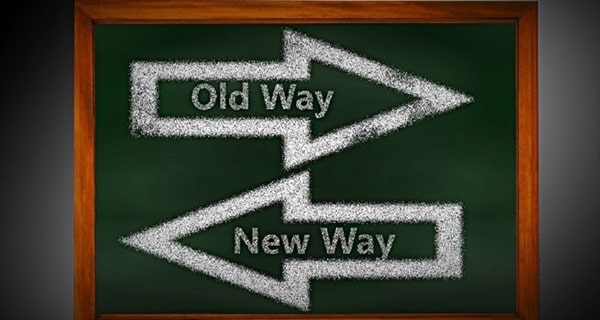Reasons why many change attempts fail and a central bias

Change is the law of life, and those who look only to the past and present are certain to miss the future.”
Those wise words of John F. Kennedy are as relevant today as they were around 60 years ago.
The difference: today we live in a time where we experience a rate of change that was probably inconceivable in Kennedy’s times.
[In der Blog-Übersicht wird hier ein Weiterlesen-Link angezeigt]
The consequences of the increased demand in managing change are:
- The global market for change management consultancy is worth at least 1 billion Euro per year, there are sources estimating it to be significantly higher.
- The market growth of this business for the coming years is predicted to be very dynamic with rates clearly exceeding GDP growth.
- Many people in organisations work on change – this is for instance visible if you enter “change” or “transformation” in the LinkedIn search: it is millions of people.
You could expect decent success rates because of this professionalisation of change management and the significant spend.
The reality?
Studies reveal that up to 80% of change initiatives do not deliver their targets!
Hold on for a moment – what does this mean? Up to 80% of money spent in change projects goes down the drain!
The return on investment is simply horrible.
What is the problem, what are barriers to effective change?
The unconscious side
During my corporate career I had exciting jobs, responsibility over teams and the opportunity to lead or steer major projects – all of that involved change. There were many occasions to experience initiatives that worked and others that did not – however, in my first years I had no clear understanding why that happened.
Entering the world of unconscious biases in the mid of my corporate careers helped me to start understanding better. While initially focusing on decision making, it became clear to me rather soon that biases are a major factor in change as well.
Biases form invisible barriers to change.
Change is complex – it involves perception of new elements and judging them in order to finally decide if to go for them or not. Change usually is not done in isolation, other people are involved and there is intense interaction. Finally, implementation is key to create effects on practical behaviour that differs from the initial state.
The complexity of change initiatives means that all of them are touched, hence need to be considered. We will go deeper and address the most relevant biases in this field.
Change on the individual level
The classical example of ineffective change attempts are New Year’s resolutions. The picture is rather clear:
- In Germany 16 % of them are implemented successfully
- In the UK around 52 % believe to be able to realise their resolutions…but
- …only 12 % succeed in doing so
Sources: Business Insider 2018; Alltagsforschung 2009
What the studies also show is intriguing: the awareness about the urgency for changes is clearly there in many cases, however the right approach and implementation is lacking.
When going deeper, we find a lot of biases that impact already on the individual level during the different stages of change.
Note: We will take the most central of them and go deeper, adding points from other relevant ones - for an introduction on biases take a look at De-Biasing or book an intro Webinar.
What is the central bias related to change?
The status quo bias
It essentially makes us say “things should stay just as they are”. Hence, it means the preference to maintain the current way of being and doing (i.e. the status quo) in the absence of pressure to change.
Related to this is the “default-effect” which means that from different option that is preferred which does not need an active decision. Change needs incentives that are sufficient enough to trigger a movement away from the current status.
In simply language: if we don’t have to move, we rather don’t.
In the next article, we go further - we look at ourselves, what lies behind the status quo bias and what we can do to manage change successfully on an individual level.
